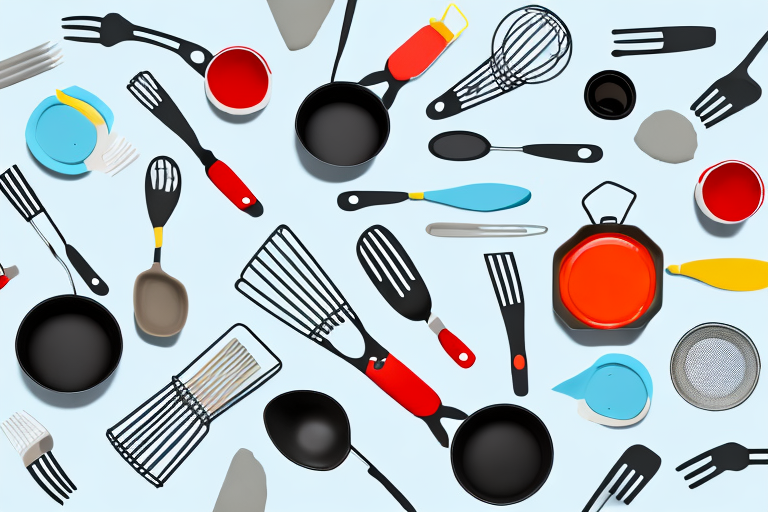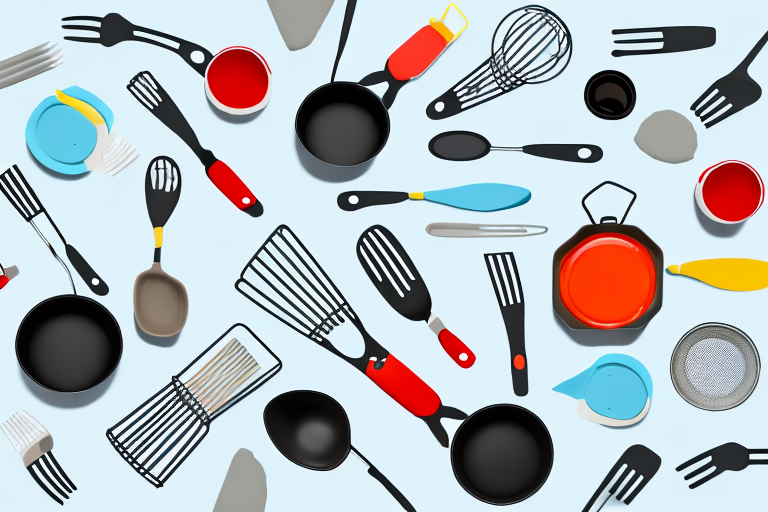
The Benefits of Nitrile Gloves for Cooking
In the kitchen, safety should always be a top priority. Whether you are a professional chef or simply enjoy cooking at home, understanding the importance of protective gear is essential. One such item that has gained popularity among cooks and chefs is nitrile gloves. These gloves offer a range of benefits that make them an excellent choice for use in the kitchen.
Understanding Nitrile Gloves
Before delving into the advantages of nitrile gloves for cooking, it's important to have a clear understanding of what they are. Nitrile gloves are a type of disposable glove made from a synthetic rubber called nitrile. They are designed to provide protection against the various hazards present in the kitchen environment.
What are Nitrile Gloves?
Nitrile gloves are made from a unique material that is suitable for use in the food industry. They are free from latex, making them a safe option for individuals with latex allergies. These gloves are available in various sizes and thicknesses, ensuring a comfortable fit for different hand sizes.
How are Nitrile Gloves Made?
The manufacturing process of nitrile gloves involves the use of advanced technology. Initially, a compounding agent is mixed with butadiene—a raw material derived from petroleum—to produce a substance called nitrile rubber. This rubber is then processed further to create the nitrile gloves that we see in the market today. The manufacturing process ensures that the gloves are of high quality and meet safety standards.
But let's dive deeper into the fascinating journey of nitrile gloves from raw materials to the final product. Once the nitrile rubber is produced, it undergoes a meticulous purification process to remove any impurities. This purification step is crucial in ensuring that the gloves are free from any harmful substances that could potentially contaminate food or cause allergic reactions.
After the purification process, the nitrile rubber is carefully mixed with other additives to enhance its properties. These additives can include colorants to give the gloves their distinctive blue or purple hue, as well as accelerators to speed up the vulcanization process. Vulcanization is a crucial step in the manufacturing process that transforms the nitrile rubber into a durable and flexible material suitable for gloves.
Once the nitrile rubber and additives are thoroughly mixed, the resulting compound is then shaped into gloves using specialized molds. These molds are designed to create gloves with the perfect fit and thickness. The shaped gloves are then subjected to a curing process, which involves heating them to a specific temperature to further enhance their strength and elasticity.
After the curing process, the gloves are carefully inspected for any defects or imperfections. This meticulous quality control ensures that only gloves of the highest quality make it to the market. Once approved, the gloves are packaged and prepared for distribution to various industries, including the food industry where their superior protection and latex-free nature make them an ideal choice for handling food safely.
So, the next time you put on a pair of nitrile gloves in the kitchen, take a moment to appreciate the intricate manufacturing process that goes into creating these essential protective tools. From the raw materials to the final product, every step is carefully executed to ensure that you have the best possible gloves to keep you safe while cooking.
The Importance of Safety in the Kitchen
The kitchen can be a hazardous place, with numerous potential risks. From sharp knives to hot surfaces and boiling liquids, accidents can happen in an instant. That's why it is crucial to prioritize safety at all times. By using protective gear, such as nitrile gloves, cooks can minimize the risks associated with their daily tasks.
Common Kitchen Hazards
There are several hazards commonly found in the kitchen. These include cuts and burns, exposure to harmful chemicals, and the transmission of bacteria. Proper protection and precautions are necessary to prevent injuries, illnesses, and contamination of food. Nitrile gloves can act as a barrier, shielding the hands from these potential dangers.
Role of Protective Gear in Cooking
Protective gear plays a vital role in maintaining a safe working environment in the kitchen. It minimizes the risk of cross-contamination and protects against harmful substances. Wearing nitrile gloves provides an additional layer of protection, ensuring that food is prepared and handled hygienically.
Furthermore, it is important to note that nitrile gloves are not only beneficial for the safety of the cook, but also for the overall quality of the food being prepared. These gloves are resistant to punctures and tears, ensuring that no unwanted particles or contaminants end up in the food. This is especially crucial when handling raw meat, as it can carry harmful bacteria that may cause foodborne illnesses if not properly handled.
In addition to protecting against physical hazards and contamination, nitrile gloves also offer a level of comfort and dexterity that is essential for efficient cooking. The gloves are designed to fit snugly on the hands, allowing for a firm grip on utensils and ingredients. This ensures that the cook has full control over their movements, reducing the risk of accidents caused by slippery hands or dropped objects.
Lastly, it is worth mentioning that nitrile gloves are a cost-effective solution for maintaining safety in the kitchen. They are durable and long-lasting, meaning that a single pair can be used for multiple tasks before needing to be replaced. This not only saves money but also reduces waste, making them an environmentally friendly choice.
Advantages of Using Nitrile Gloves for Cooking
Now that we understand the importance of safety in the kitchen, let's explore the specific advantages that nitrile gloves offer.
Enhanced Protection and Safety
Nitrile gloves are known for their exceptional durability and strength. They provide reliable protection against cuts, punctures, and abrasions—all of which are common risks in a kitchen setting. Additionally, their high resistance to chemicals and oils further enhances their safety benefits, ensuring that harmful substances do not come into contact with the skin.
Allergen-Free Material
Unlike latex gloves, nitrile gloves are hypoallergenic. This means that they do not cause allergic reactions for those with latex sensitivities. By opting for nitrile gloves, cooks and chefs can ensure a safe and comfortable experience in the kitchen without worrying about potential allergic reactions.
Durability and Comfort
Comfort is crucial when wearing gloves for long periods of time, especially during demanding cooking tasks. Nitrile gloves are designed to provide a snug fit without sacrificing comfort. They offer excellent dexterity, allowing for precise movements when handling ingredients and kitchen tools. The durability of nitrile gloves also means that they do not easily tear or puncture, providing extended use without compromising safety.
Furthermore, nitrile gloves are resistant to punctures from sharp objects commonly found in the kitchen, such as knives and graters. This added layer of protection ensures that even accidental slips or mishaps won't result in injury. Whether you're slicing through a juicy tomato or grating a block of cheese, nitrile gloves will keep your hands safe and intact.
In addition to their protective qualities, nitrile gloves are also designed with the comfort of the user in mind. The gloves are made from a soft and flexible material that conforms to the shape of the hand, providing a comfortable and natural fit. This allows for prolonged use without discomfort or fatigue, enabling chefs and cooks to focus on their culinary creations without any distractions.
Comparing Nitrile Gloves with Other Types of Gloves
While nitrile gloves have their own unique advantages, it's important to consider how they compare to other types of gloves commonly used in cooking.
Nitrile vs. Latex Gloves
Latex gloves have long been a popular choice in the food industry. However, they can cause allergies for people with latex sensitivities. Nitrile gloves, on the other hand, offer a latex-free alternative while still providing the necessary protection in the kitchen. Nitrile gloves are also more resistant to punctures and chemicals, making them a superior choice in terms of durability.
Nitrile vs. Vinyl Gloves
Vinyl gloves are another common option considered for cooking tasks. While they are cost-effective, they lack the durability and resistance of nitrile gloves. Vinyl gloves are more prone to tears and punctures, putting the wearer at greater risk. Nitrile gloves, with their superior strength and durability, offer a more reliable choice for ensuring safety in the kitchen.
Proper Usage and Care of Nitrile Gloves
To make the most of the benefits of nitrile gloves, it is important to know how to correctly use and care for them.
How to Correctly Put on Nitrile Gloves
Prior to using nitrile gloves, ensure that your hands are clean and dry. Gently pull each glove over your hand, making sure they fit snugly around your fingers and palm. Avoid touching the outer surface of the gloves, as they may come into contact with contaminants. Properly wearing nitrile gloves maintains their effectiveness as a protective barrier.
Cleaning and Disposing of Nitrile Gloves
After use, carefully remove nitrile gloves by peeling them off from the inside, turning them inside out as you go. Dispose of used gloves properly, following the appropriate waste management guidelines. If the gloves are still intact and clean after use, they can be washed with mild soap and water, then thoroughly dried before reuse. However, it is important to note that nitrile gloves are generally intended for single-use to maintain hygiene standards.
By understanding the benefits and proper usage of nitrile gloves, cooks and chefs can enhance safety in the kitchen while preparing delicious meals. Prioritizing safety not only protects individuals from potential hazards but also contributes to the overall quality of the dining experience.

